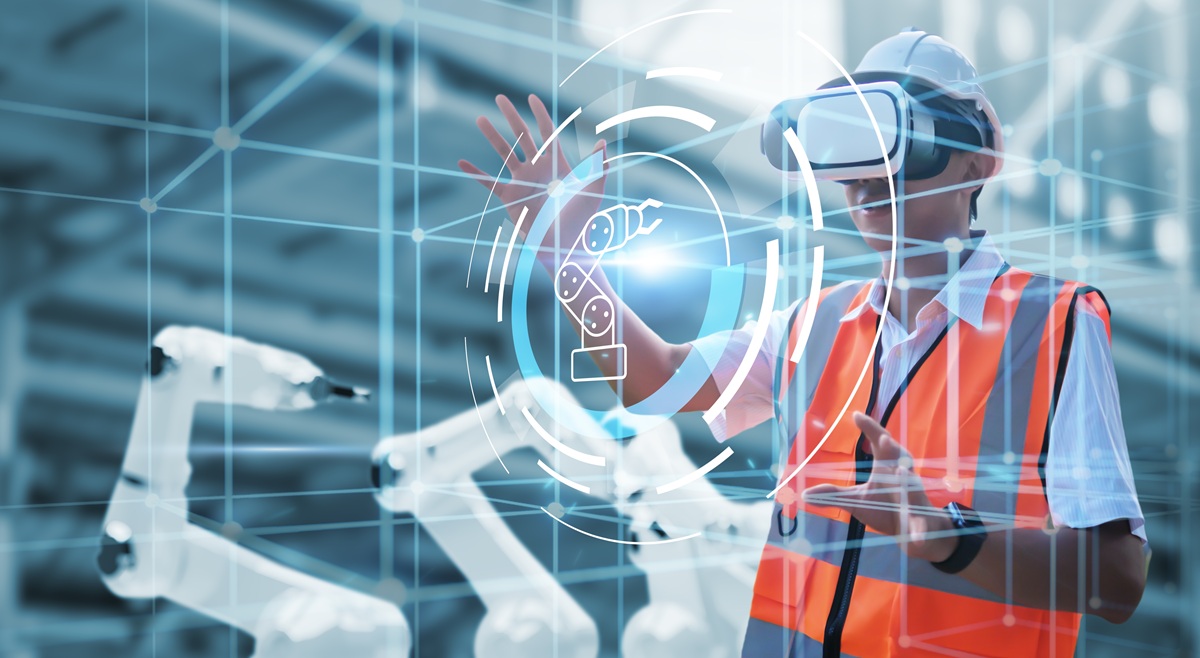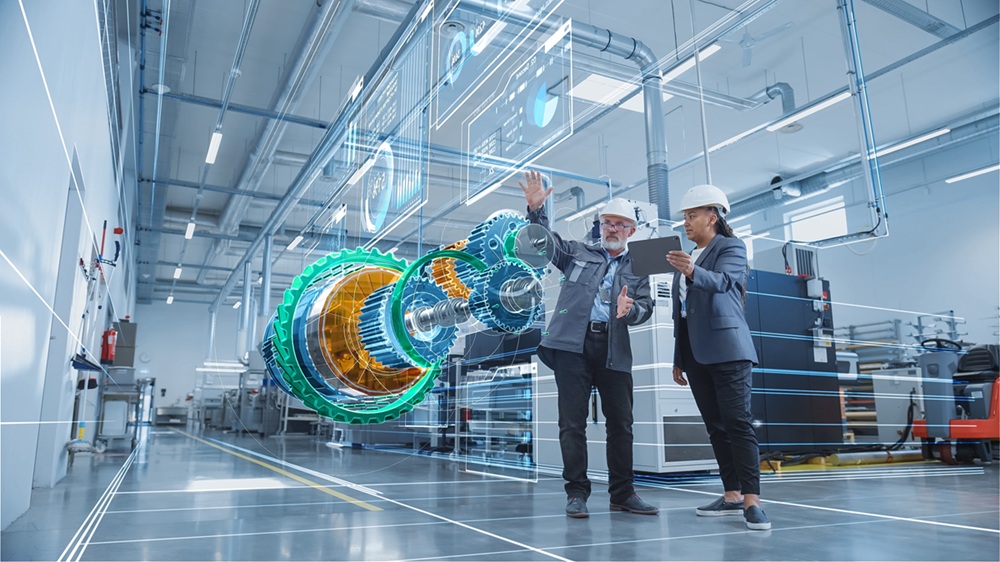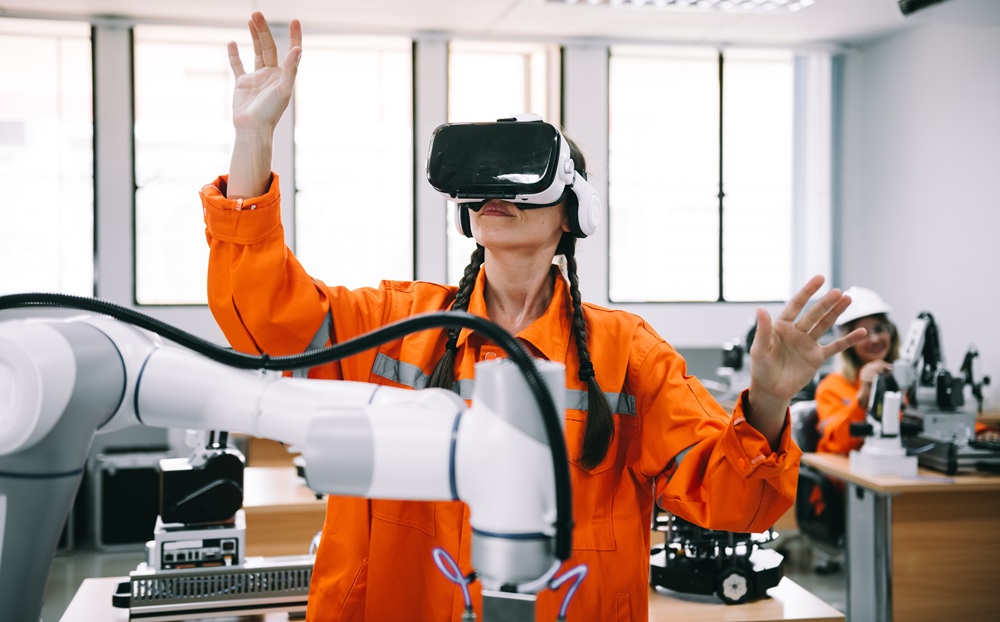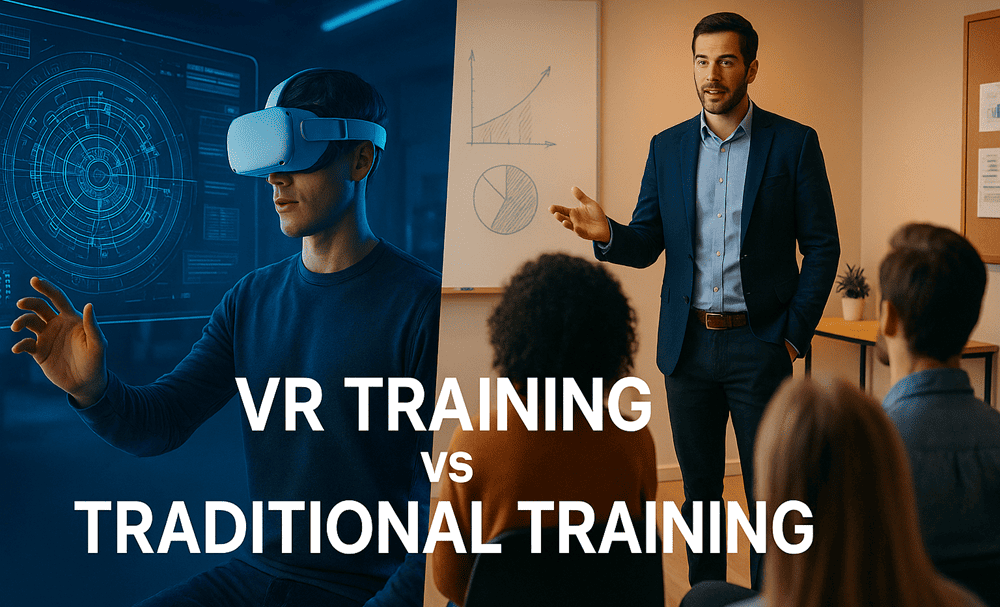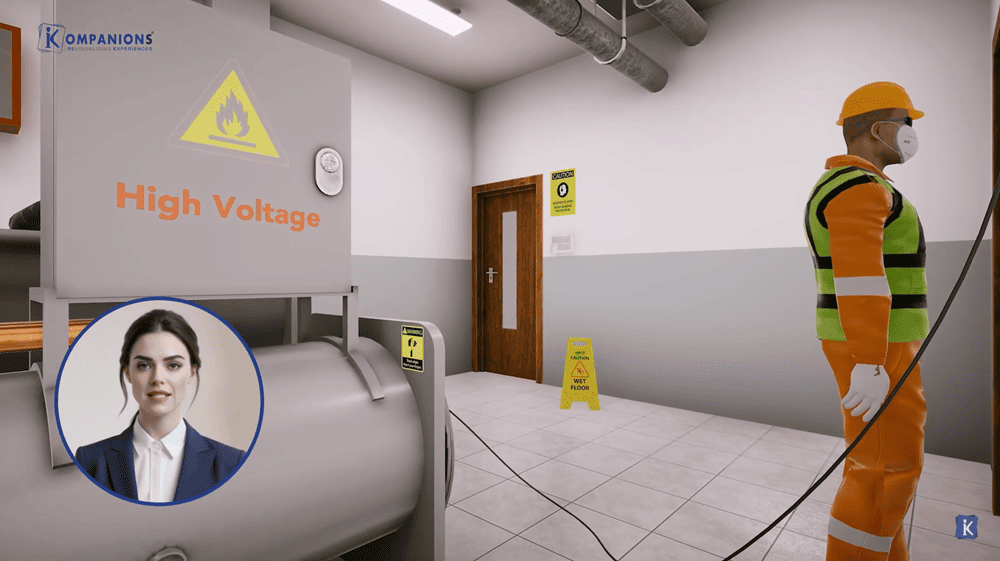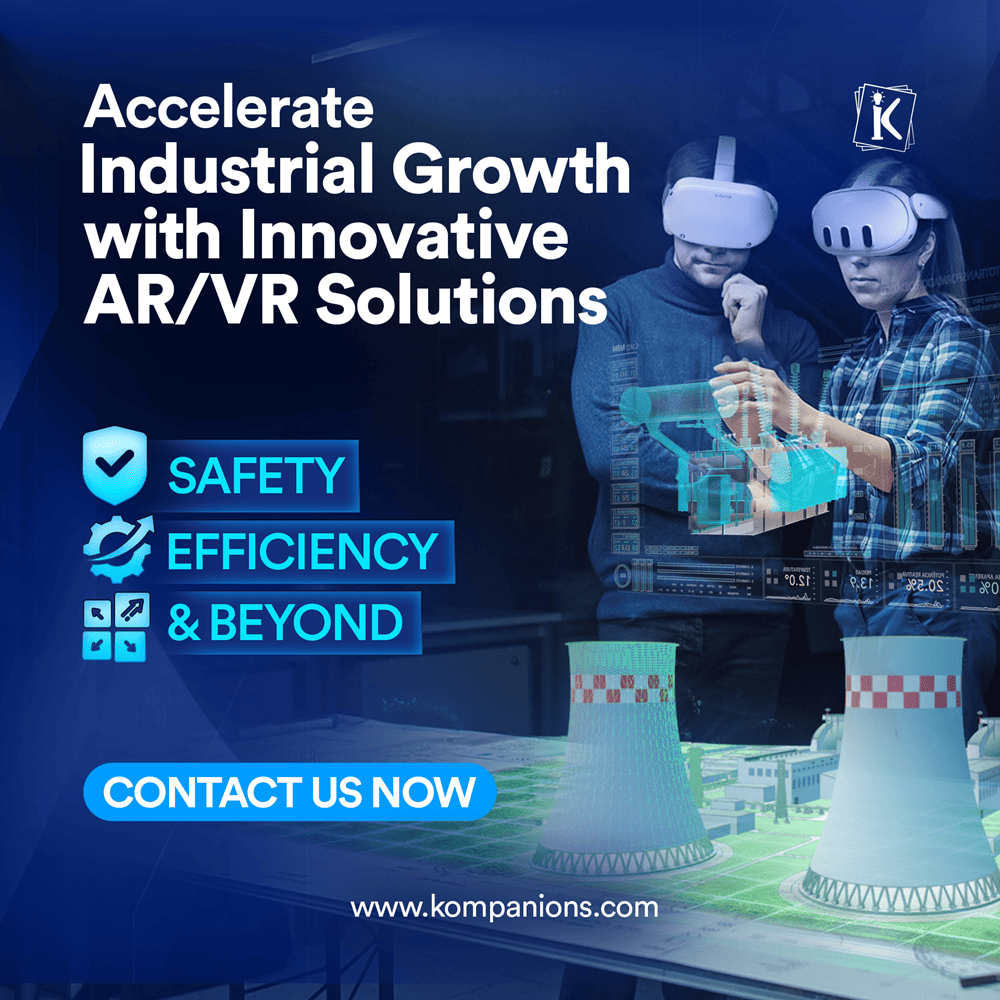Article By: Robin Gupta
June 13, 2025 | 4:55 Minutes Read | Updated On: 13 June 2025
Upskilling Blue Collar Workers for the Future Through AR/VR
In today’s rapidly evolving industrial landscape, the future of blue-collar work is being reshaped by automation, digitalization, and skill demands that go beyond manual labor.
Amidst this transition, the need for upskilling for blue collar workers has never been more urgent. And standing at the forefront of this transformation are immersive technologies: Augmented Reality (AR) and Virtual Reality (VR).
This blog examines how AR/VR-based upskilling initiatives can equip the blue-collar workforce with relevant, future-ready skills. It highlights why businesses must adopt this change to remain competitive.
The Skills Gap and Blue Collar Workforce
The skills gap is real. According to a recent report by the World Economic Forum, over 40% of workers worldwide will require reskilling within the next five years.
This figure is even more pressing for industries reliant on manual labor, where new-age equipment, safety protocols, and operational systems are transforming job requirements.
Many blue-collar roles, from factory operators and field technicians to heavy equipment drivers and maintenance personnel, now demand digital literacy, real-time decision-making, and continuous adaptability.
Unfortunately, traditional training methods often fail to meet these evolving needs.
Why Traditional Training Doesn’t Cut It Anymore
Workshops, manuals, and on-the-job training have long been the norm. But they come with limitations:
- One-size-fits-all approach with minimal personalization
- High risk in live training environments (e.g., operating heavy machinery)
- Poor retention rates due to passive learning
- Time-consuming and costly setup
That’s where industrial AR/VR training for frontline workers steps in, offering scalable, safe, and effective training ecosystems.
Related post: VR Training Beats the Traditional: Here’s What Workers Are Saying
Enter AR/VR: A New Age of Upskilling the Blue Collar Workers

AR/VR technology redefines how skills are taught and retained. Here’s how these technologies support upskilling for blue-collar workers:
1. Hands-On, Risk-Free Learning
Using VR training for heavy equipment operators, workers can safely simulate real-world scenarios—from complex machinery handling to emergency protocols—without the danger or downtime of real equipment.
2. Enhanced Retention Through Immersive Experience
Studies show VR learners retain up to 75% more information compared to conventional methods. Real-time feedback and active participation cement knowledge more deeply.
3. Location-Agnostic Access
Whether a technician is based in a bustling metro city or a remote rural area, immersive AR/VR training modules ensure uniform, high-quality skill delivery without the need for physical classrooms or trainers.
This empowers organizations to train their blue-collar workforce consistently across geographies, reducing dependency on location-based infrastructure and ensuring everyone learns at the same pace with the same effectiveness.
4. Boosts Digital Confidence
For blue-collar workers who may have limited exposure to advanced digital systems, AR/VR provides an accessible, hands-on introduction to new technologies.
By interacting with intuitive interfaces in a simulated environment, they gradually build comfort with digital tools, increasing their confidence and readiness to embrace modern equipment, software, and workflows that are becoming standard in today’s industrial operations.
5. Faster Time-to-Competency
With augmented reality for field technicians, complex repair or installation tasks are broken down into guided visual steps, significantly reducing ramp-up time.
Real-World Impact: Industry Use Cases
Industries are leveraging AR/VR to train blue-collar workers faster, safer, and smarter—here’s how it’s making an impact.
Manufacturing
AR overlays in manufacturing provide real-time visual guidance for assembly line workers, helping them follow standard operating procedures (SOPs) accurately. This reduces production errors, speeds up task completion, and enhances operational efficiency.
Automotive
VR-based simulations allow automotive workers to train on complex tools, assembly techniques, and new vehicle models in a virtual setting. This ensures uninterrupted production lines and reduces the learning curve significantly.
Oil & Gas
Digital twins in oil and gas industry training replicate hazardous real-world conditions, enabling safer, risk-free skill development for blue-collar workers involved in drilling, pipeline maintenance, and refinery operations.
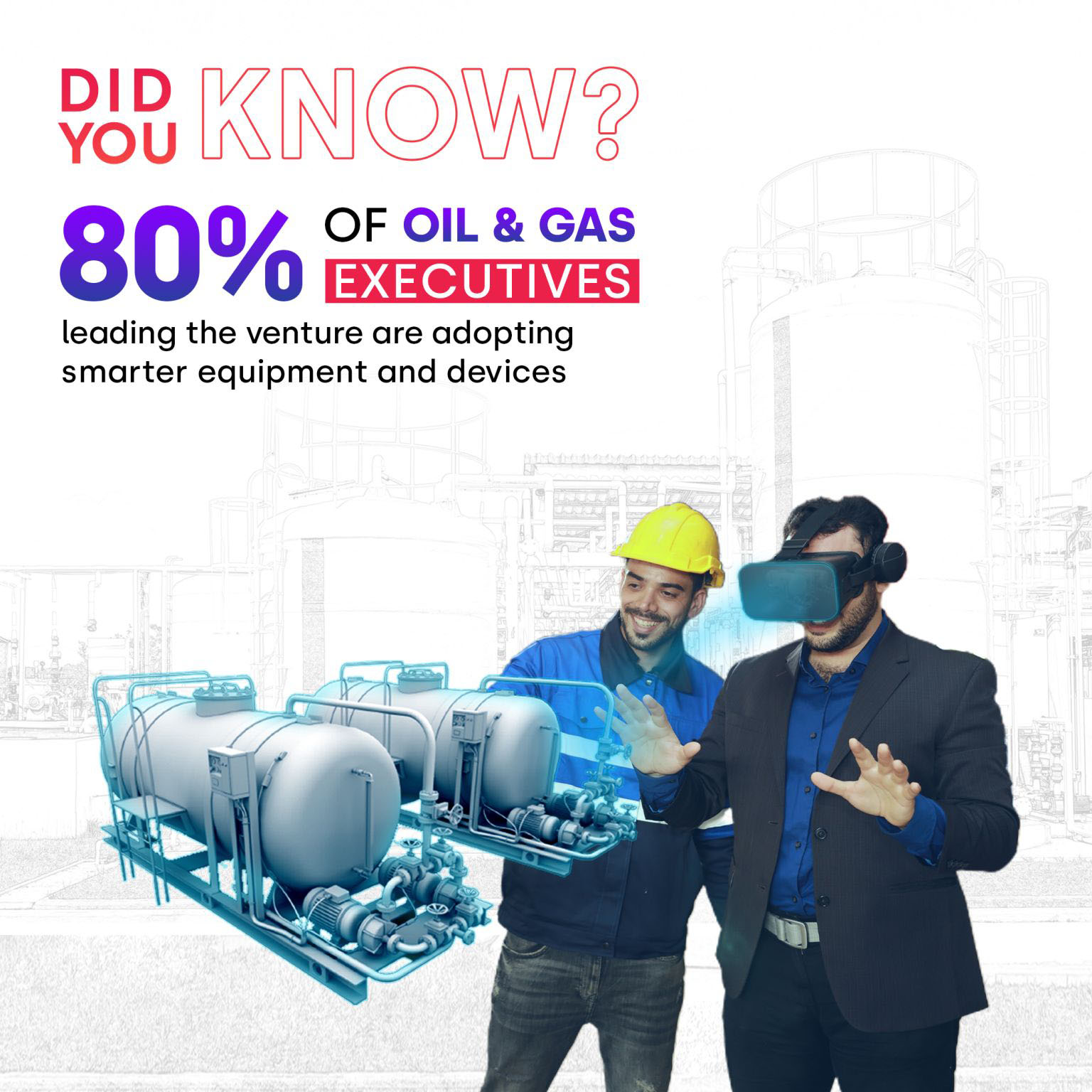
Construction
Virtual Reality training addresses high-risk areas like poor manual handling and heavy equipment usage. Workers gain hands-on safety training that reduces injury rates, improves compliance, and boosts job site awareness.
Business Value for Enterprises
Adopting AR/VR training is not just about future-proofing the workforce. It has tangible business benefits:
- Reduced operational downtime
- Minimized training costs over time
- Lower accident rates and improved compliance
- Higher employee engagement and retention
- Better scalability across multiple sites
In fact, companies using immersive training report up to 40% faster onboarding and 30% fewer errors on the job.
Getting Started: How Businesses Can Implement AR/VR Training
- Assess Skill Gaps: Identify roles and workflows where traditional training underperforms.
- Select the Right Tech Stack: Choose between AR (ideal for real-time guidance) and VR (for risk-free simulation).
- Partner with Experts: Collaborate with immersive training providers like Kompanions who understand domain-specific needs.
- Track Performance: Use built-in analytics to monitor progress and retention.
- Scale Strategically: Start with pilot programs and expand across teams or sites.
Final Thoughts
In a time when manual labor jobs are being reshaped by AI and automation, it’s essential that the blue-collar workforce isn’t left behind. AR and VR don’t just offer modern tools; they offer a lifeline to relevance, safety, and growth.
By embracing immersive technology, businesses not only enhance operational efficiency but also champion inclusivity, bridging the digital divide for blue-collar workers across sectors.
Upskilling for blue collar workers through AR/VR isn’t just a trend. It’s a business necessity.

